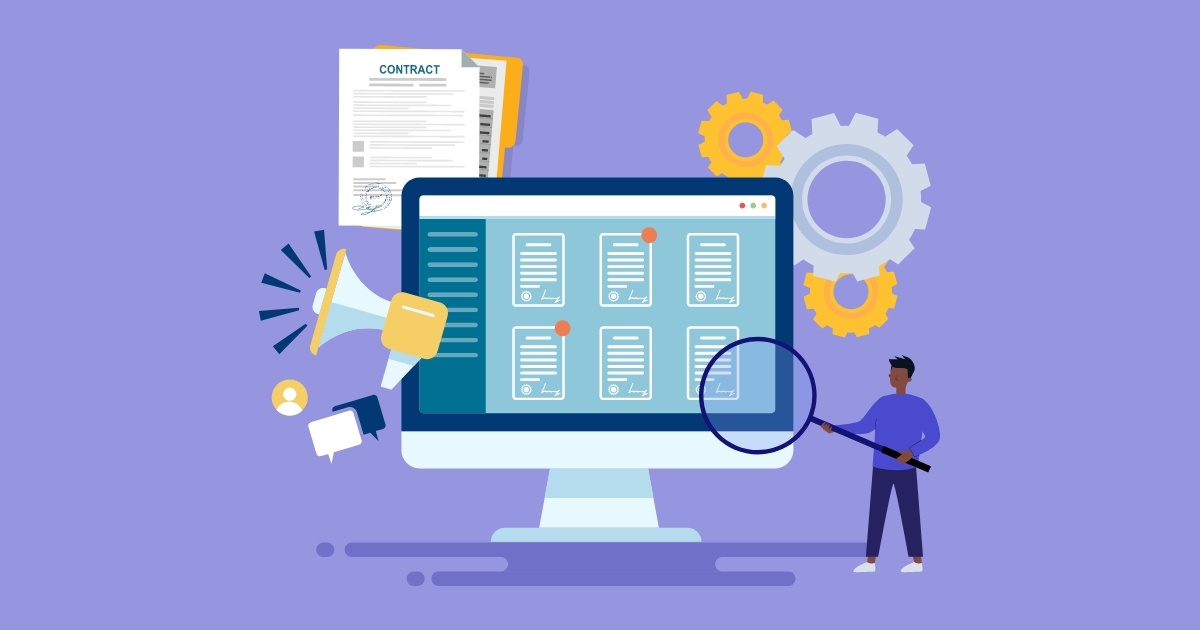Vendor contract management takes a lot of work and can involve many different departments such as finance, operations, information security, and more. Managing a vendor contract is more than simply negotiating financial and legal terms; it’s also a key component in mitigating vendor risk within your organization.
Fortunately, vendor risk management software can help you develop and sustain a comprehensive, well-rounded agreement. This can be a great solution that supports efficiency and provides high-quality results that can be shown to your senior management team, the board, and examiners.
5 Benefits of Using Vendor Risk Management Software
Signing the vendor contract doesn’t mean the process is complete. A vendor contract involves many phases and moving pieces, even after it’s been approved and executed.
A contract management component in your vendor risk management software can help bring efficiency by providing the following benefits:
- Automation. Think about all the tasks involved in the contract management oversight process: requests for proposals (RFPs), ongoing monitoring, tracking significant dates, etc. Automating just one of these areas can free up valuable time that can be devoted to other third-party risk management activities. You can expect to see increased efficiency when you automatically track the following items:
- Effective and expiration dates
- Renewal dates and auto-renewal clauses
- Non-disclosure agreements
- Service level agreements (SLAs)
- Dates of documents that are incorporated into the contract by reference, or that are signed after the agreement (e.g., exhibits, statements of work, work orders, purchase agreements, amendments, etc.)
- Timeframes associated with breaches or remedies and notification periods
- Centralization. One of the biggest challenges in contract management is organizing multiple documents and dates. Vendor risk management software can help streamline the overall vendor management program across multiple lines of business. Your organization will have better insight on documentation, and ultimately, which vendors are most impactful to their business channel.
- Improved visibility. Software contains easy-to-view dashboards, where teams can see status updates of different tasks. Utilizing a central repository for vendor contracts also allows you to identify any overlap between vendor types or gaps in your agreements.
- More robust system. A contract management component in your software provides a place to store documents, which lessens the risk of losing critical data if your facility experiences a business disruption. Additionally, it provides an alternative to relying on ad-hoc reports. You can instead create a highly customized standard set of reports that clearly identifies areas of concern, which helps you meet your board and examiner’s needs for comprehensive information.
- Adaptability. Vendor risk management software removes the need to be dependent on any one individual. Once the process is built and recorded in the software, workflows can be easily repeated or adapted without much manual input. This allows for better cross-channel visibility and functionality, while also reducing missed deadlines.
4 Reasons for Contract Re-assessment
Remember that vendor contract management is an ongoing process that doesn’t end after you sign on the dotted line. You may need to re-assess your contract throughout the engagement for the following reasons:
- Updated regulatory requirement. Stay aware of any regulatory guidance updates that may occur during the contract term.
- Vendor issues. You’ll want to review your contract for penalty provisions if you are experiencing vendor issues such as unmet SLAs or a poor performance record.
- Modifications. You may need to modify your contract by adding new provisions to add or remove products and/or services as your organization’s needs grow and change.
- Audit Exceptions. If your vendor’s audit shows exceptions or other adverse material findings, you’ll want to review your contract to be sure that provisions are in place which clearly identify the response plan and that they will provide you with documentation of resolutions to any such deficiencies.
Using a vendor contract management component within your vendor risk management software is a great way to bring maturity to your program. Managing vendor risk requires an increasing level of oversight, but software can help make the process more efficient.
Consider adding robust vendor risk management software to your toolbox and you can effectively cut down your to-do list without sacrificing quality.



















.gif?width=1920&name=Sample-Graphic-Animation%20(1).gif)















